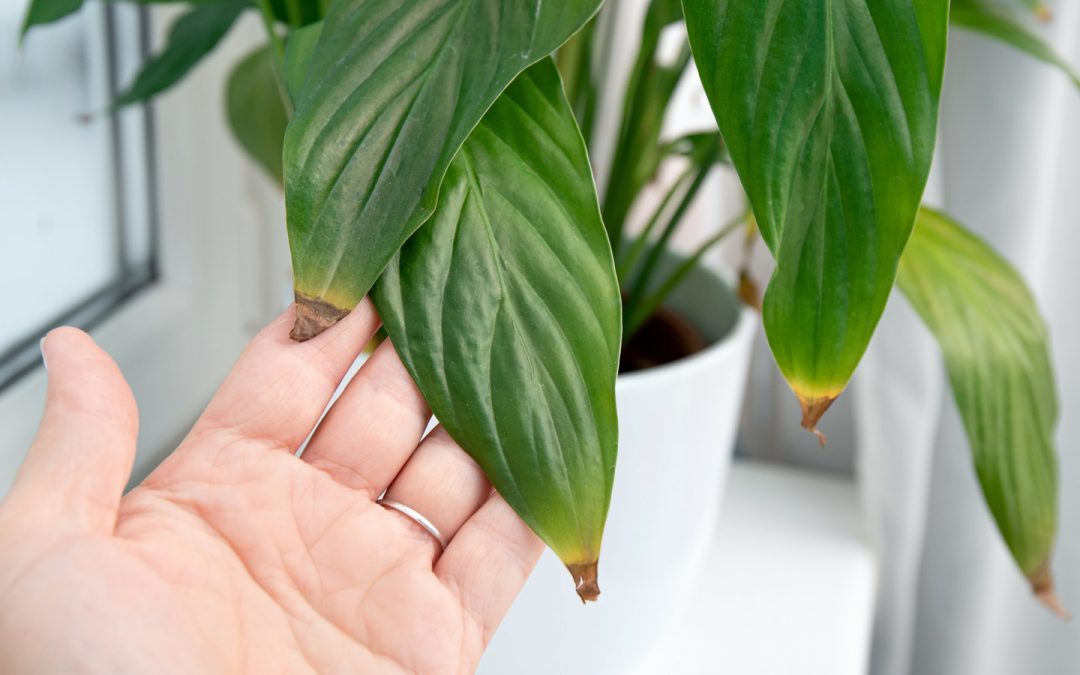Contents
Why Indoor Plants Get Brown Tips on Leaves (And How to Fix It Fast)
Brown, crispy leaf tips can ruin the lush look of your indoor plants. Whether you’re nurturing a peace lily, spider plant, or pothos, brown tips are a common issue that frustrates even experienced plant lovers. The good news? You can easily prevent and fix it once you understand the real cause. Let’s dive into why this happens and how to restore your houseplants’ health.
What Causes Brown Leaf Tips on Indoor Plants?
Here are the most common culprits:
Low humidity: Many houseplants, especially tropical ones, need higher humidity levels than most homes provide.
Water quality: Tap water with high levels of fluoride, chlorine, or salts can damage sensitive plants.
Under or overwatering: Both can lead to brown tips, depending on the plant type.
Fertilizer burn: Excess nutrients can “burn” the leaf edges.
Root-bound plants: Roots that have outgrown the pot can’t take up water efficiently.
Direct sun exposure: Harsh light can scorch delicate leaves.
Some brown leaf tip problems can also arise due to dust buildup or poor airflow around the plant. Keep foliage clean and occasionally rotate plants to ensure even light distribution and airflow.
How to Prevent Brown Tips from Returning
Check Your Water Quality
Use filtered or distilled water if your tap water is hard.
Let tap water sit for 24 hours to evaporate chlorine before using it.
Increase Humidity Indoors
Group plants together
Use a humidifier near your indoor garden
Try this compact humidifier for plants on Amazon.
Master Your Watering Schedule
Use a moisture meter to avoid overwatering.
Check out this best-selling soil moisture meter
Don’t Over-Fertilize
Stick to a monthly feeding schedule
Use diluted liquid fertilizer for houseplants
Repot When Necessary
Check roots yearly to ensure they’re not bound or circling the pot
Trim Damaged Leaves
Use clean scissors to trim only the brown part—don’t cut into healthy green areas
Best Plants for Low-Brown-Tip Risk
Some houseplants are naturally less prone to browning:
Snake plant (Sansevieria)
ZZ plant
Cast iron plant
Pothos
Dracaena marginata
These plants are tolerant of lower humidity and infrequent watering, making them great choices for busy or beginner plant parents.
FAQs About Brown Leaf Tips
Q: Should I cut off brown leaf tips?
A: Yes, use sterilized scissors and trim just the brown part—don’t remove the whole leaf unless it’s 90% damaged.
Q: Why do tips keep turning brown even after fixing humidity?
A: It could be mineral buildup in the soil or poor water quality. Try flushing the soil and switching to filtered water.
Q: Is brown tipping a sign of disease?
A: Usually no—it’s more about environmental stress. But if paired with spots or mushy areas, check for fungal issues.
Q: How can I tell if my water is harming my plant?
A: Signs include white residue on the soil, leaf browning despite regular care, or slowed growth. Switch to rainwater or filtered water if unsure.
Final Thoughts on Fixing Brown Leaf Tips
Brown tips might seem like a minor problem, but they signal that your plant’s environment needs adjusting. By managing humidity, water quality, and fertilizer use, you can restore your plant’s health and keep it thriving. Always monitor your plant’s conditions weekly and respond quickly to changes—it’s the key to lush, vibrant foliage year-round.
If you’re unsure whether your water or humidity levels are ideal, investing in a basic moisture meter and small humidifier can make a noticeable difference in your plant’s appearance and health. Your indoor garden deserves the best environment possible—don’t wait until it’s too late. Learn more about brown leaf tips on the Gardening Know How site.

